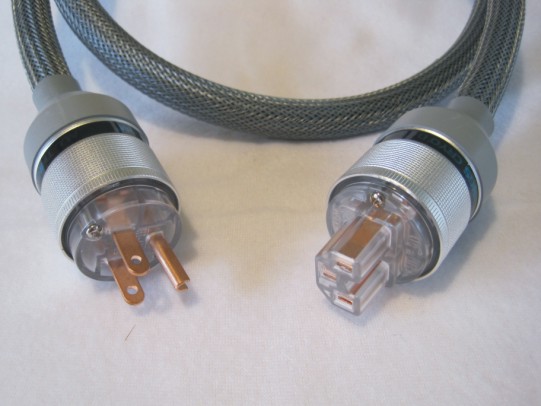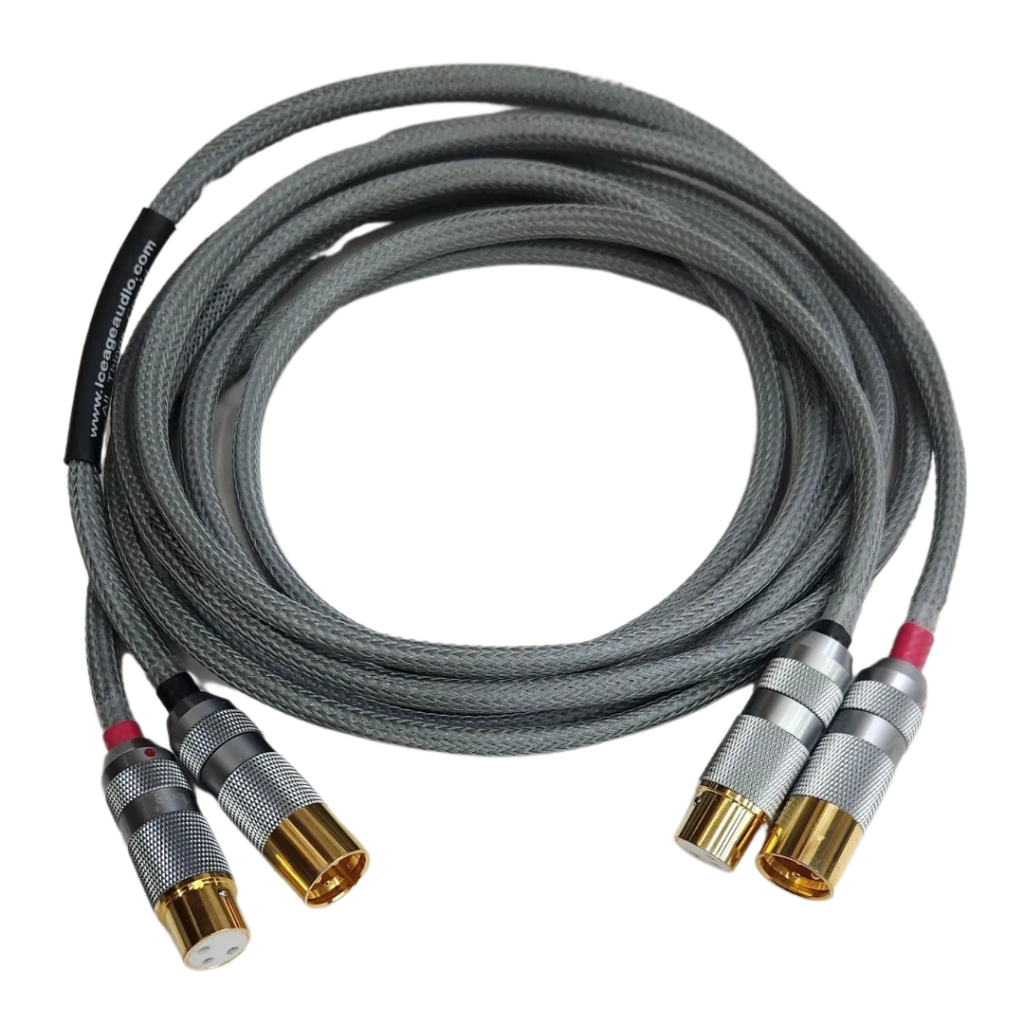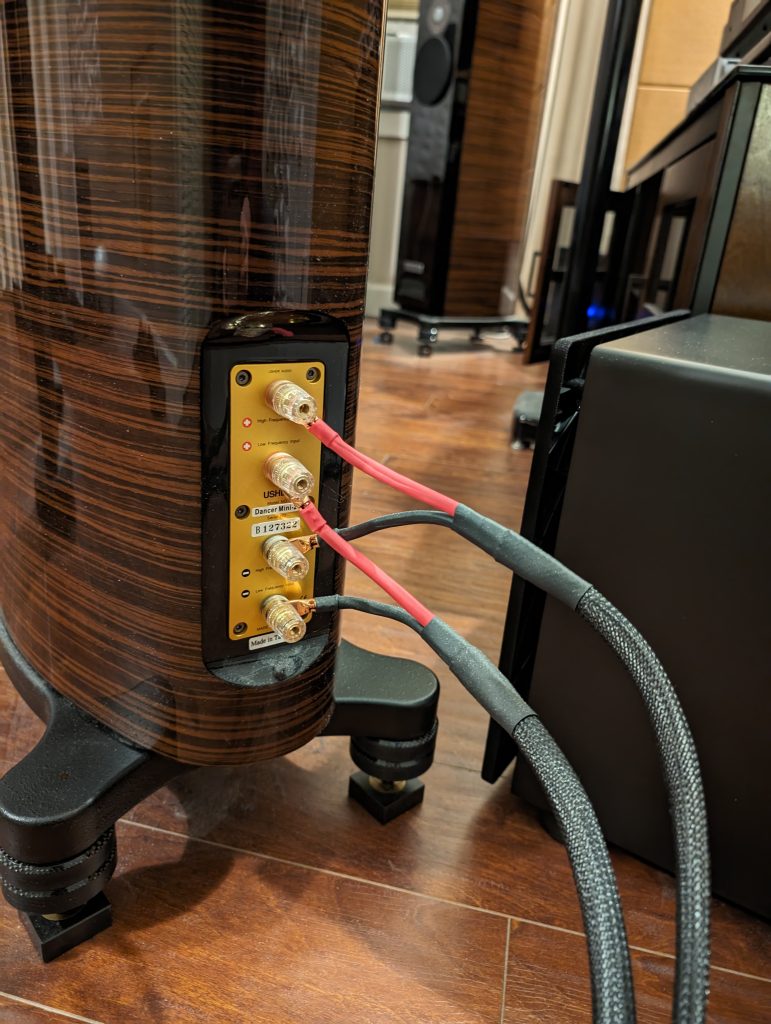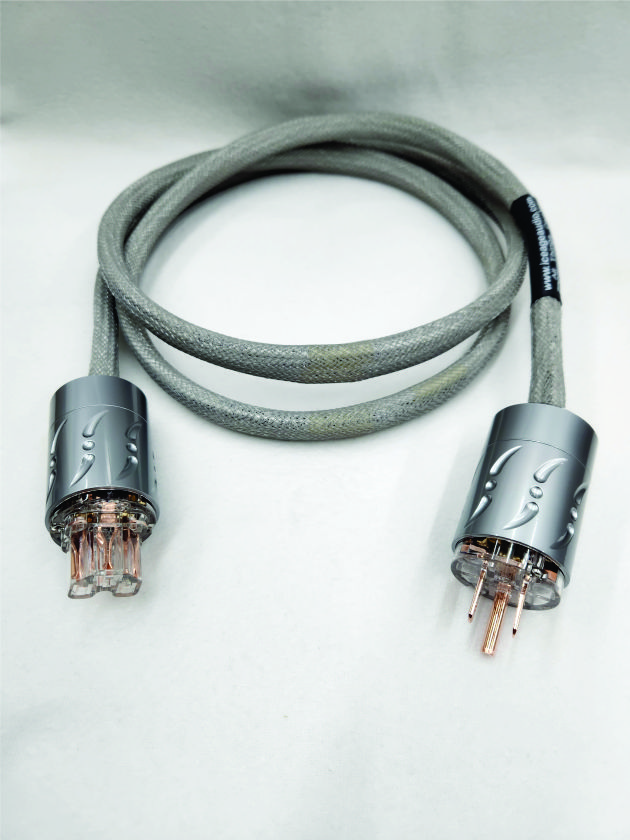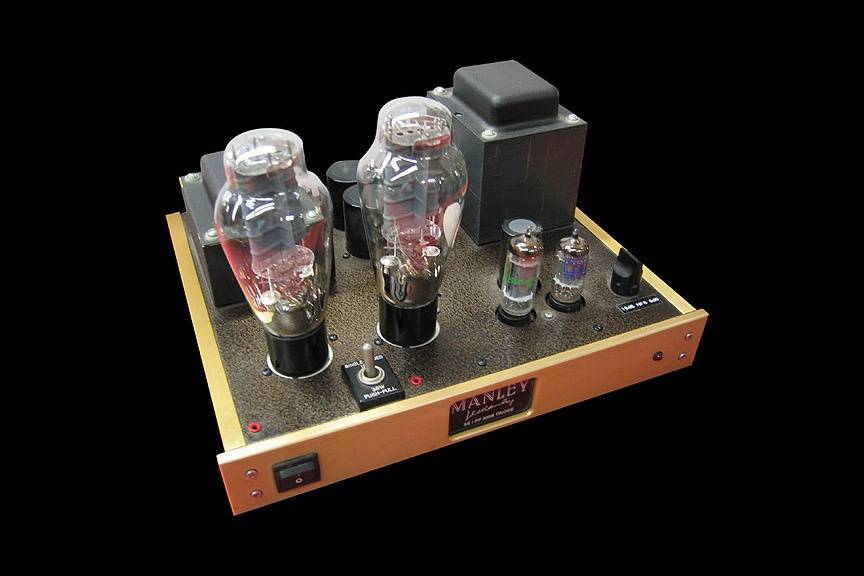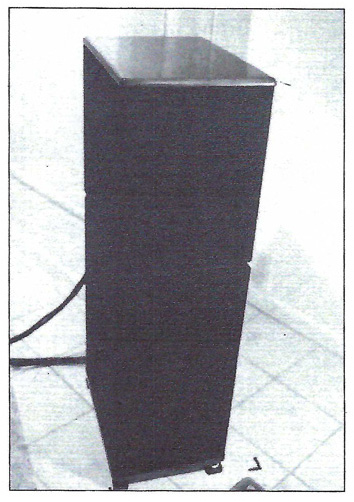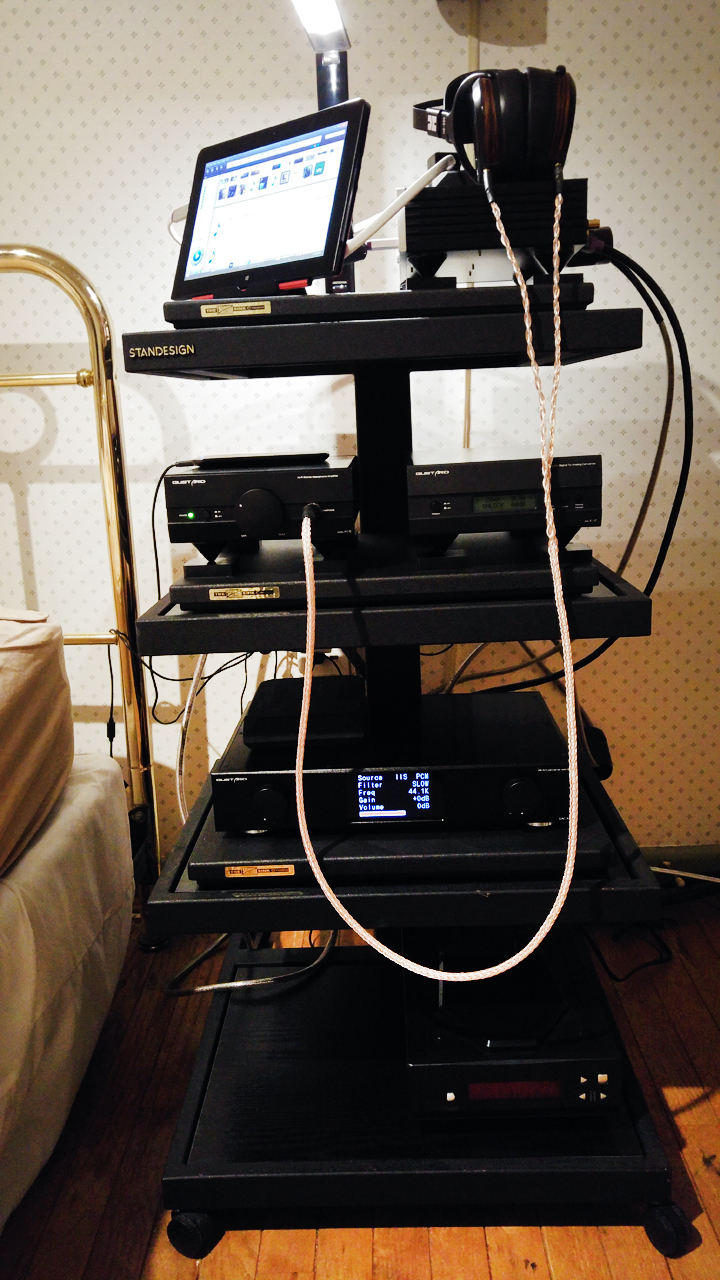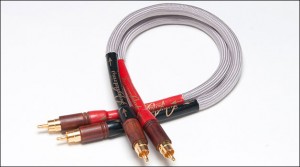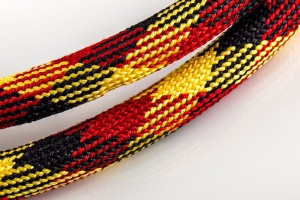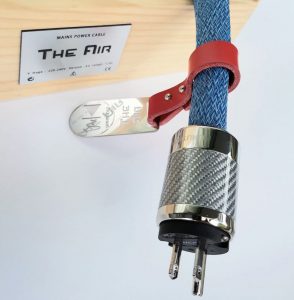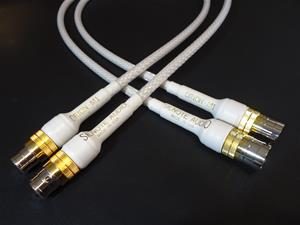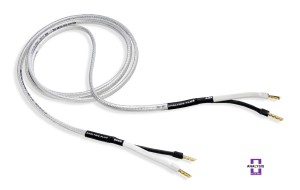Intro - Some New Toys at Stu's
It's been a while. Over two years by my reckoning.
There's been a lot going on in my world, but hidden away, deep in my audio bunker, I've been doing a lot of modifying, tweaking, and after doing much careful listening, I've even picked up a few new components. As all good reviewers should, I need to update my current system listing, so let's do that now.
My sources are all digital. I'm using a highly modified Denafrips Avatar CD Transport with the Headquarters Audio Qsuspension and Qstab stabilizer on a custom isolation shelf. My other source is the new Denafrips Arce network streamer. The beauty of using these two sources is that they both have the option of using an external clock with a 45.1548mHz and 49.152mHz output. It just so happens that the Denafrips Aether master clock has these outputs and I'm using the Aether and Geistnote Apogee Wyde Eye Word Clock cables to feed the Avatar and the Arce. I'm using the Denafrips Gaia DDC as the hub for both digital sources and the Gaia is also slaved to the Aether clock with another pair of the Geistnote Word Clock cables. (In my system, the Aether master clock takes the realism of digital sources up a very large notch).
The Gaia DDC feeds my Denafrips Venus II via a pure silver I2S cable. The Venus II runs its analog outputs via custom mono-crystal pure silver XLRs (more on these XLRs later) into my Hattor Audio Big Passive/Active Preamp. I have short jumpers of the same custom XLR's that run from Hattor Pre in passive mode to the Hattor Active tube stage. This tube stage runs a pair of Upscale Audio's Brimar 12 AU7s (Kevin's stash cryo treated—and worth every penny). We then run from the tube stage to the PS Audio M1200 monoblocks via longer runs of the same custom XLR's. The M1200s, which I reviewed and now own, have Upscale Audio's cryo treated Gold Lion 12 AU7s with Herbies Ultimate Tube Dampers applied. Speaker cables are double runs (bi-wired) of Audio Sensibility Signature cables. They are connected to a pair of Usher Audio Dancer Mini-2 Diamond tower loudspeakers with custom isolation bases. The M1200s are also connected with custom runs of VH audio cryo speaker wire to a pair of Elac Varro RS500-SB subwoofers. (I am way overdue in finishing my review of the Usher speakers, but let me just say that they are in the top three loudspeakers I've ever heard, and are not leaving any time soon. I also have the Varro subs in the works and they are equally impressive and a perfect pairing with the Ushers).
Power conditioning is with a Tice Audio Reference Power Block running off of a dedicated and isolated audio circuit. The network streaming is provided by a custom cable modem and LHY SW-8 Ethernet switch both with custom linear power supplies and a direct run to the Arce streamer with Furutech Ethernet cable with an EverStar MI-300 Ethernet Galvanic Isolator on one end and the iFi Lan iSilencer on the other.
I'm running all Synergistic Research Purple fuses and Quantum Science Yellow fuses throughout the system, including the main fuses in the Tice Power Block. I'm using Townsend Seismic Sinks, Black Diamond Racing shelves and cones, Golden Sound DH cones and squares, IsoAcoustics Gaia II feet, Preffair ceramic isolation feet, Stillpoints Ultra mini V2s and a host of other mods and tweaks that I can no longer keep track of.
Phew…we're done.
Sorry to put you through that, but I think it may be beneficial if it at least serves as empirical proof that I'm very particular about everything audio, and am willing to put the time in to get it right, for me. As I've said before, and it's worth saying again, "I'm the world authority on what sounds good to Stu, in Stu's room with Stu's associated gear." I know full well that this is a highly subjective proposition, but nevertheless, I've learned, over the years, that an awful lot of audiophiles share my tastes.
I don't get around to writing down my thoughts very often, but when I do, it's because something in our audio world has really impressed me. I get the most impressed when I find a David that can whip the industry Goliaths with merely a sling and some stones—and that's metaphorical for budget priced gear that can play in the big leagues, and also the perfect segue way for this review.
Know Your Cro-Magnon
So how did this Ice Age journey start? Simple really. So easy a Cro-Magnon could do it.
I had acquired several more pieces of high-end gear for my system, mostly in the digital domain, as I listed above—the Denafrips Gaia DDC, followed by their master clock, the Aether, and lastly their transport, the Avatar. If you were thinking that I've become a Denafrips fan boy, you'd be right.
I had already exhausted my stash of audiophile quality power cords and felt it was time restock with something good and affordable. I had already tried out some of the Amazon specials from China, you know, the ones that claim to use OFC mono crystal copper wire, but probably don't. Honestly, the only thing impressive about them was their low price and fast delivery through Amazon Prime.
I did have some excellent results with products from Audio Sensibility in Canada, having purchased their signature AES/EBU cable and their Signature speaker cables. These use real OFC Continuous Crystal copper and are cryogenically treated in-house. I saw that A.S. also had a line of power cords, but feeling adventurous, and well, cheap, I decided to do a little online search for OFC cryoed power cords in hopes of finding a bargain.
I came across and ad for Ice Age audio and perused their web page. I liked what I saw. A no nonsense approach with very accurately described products. It kind of reminded me of Audio Sensibility at a more affordable price, like way more affordable. The prices were so low with such a straight forward return policy, that pulling the trigger was a no brainer. Right before placing my first order for a few cords, I saw the company phone number at the bottom of their web page with a prompt to give them a call if you had any questions about their products. Having never conversed with an Ice Age Cro-Magnon, I excitedly gave them a ring. "Hello, I'd like to speak to the head Cro-Magnon." The gentlemen who answered laughed and said, "I guess that would be me." Turns out I was talking to Rick Parker, the owner and CEO.
That first call was a lot of fun. I didn't let on that I was Stu, world renown senior associate editor of Positive Feedback (and legend in his own mind) and it didn't seem to matter. This guy was personable and was just as no nonsense as his web site. I can't remember how long that first call lasted, but it had to be at least an hour. I remember thinking, hey, even if I'm not thrilled with his power cables, this is a guy I would enjoy having as a friend.
I learned that Rick was a bonafide audiophile who had a real life and career outside of audio. Rick gets jazzed about audio discoveries, just like I do, gets chaffed over companies catering to audiophiles who gouge them with their prices, just like I do, and he passionately believes that the composition of the wire really matters, as does cryogenic treatment. He also believes that cryogenic treatments are not equal and that using the right wire with the right freezing protocol can make a significant difference in how a cable performs, just like I do. Rick talked about his son Brodie and how he was a major part of the business. Ice Age Audio is a father and son operation with Brodie using his expertise in assembly to personally build all of the main line power cords. Rick obviously thinks the world of his son and puts him first in his business and life concerns. I really like that, because in my book, family is always a priority.
A bromance was brewing. Undoubtedly. This guy was practically finishing my sentences and I was starting his. I thought it would be good idea to get the first batch of cables in before we went too far and I got too biased in Rick's favor. I took a little bromance break while the cables shipped and decided to not chat with Rick again until I had some critical listening time under my belt.
This would be a good place to give a more thorough history of Rick Parker and Ice Age Audio. I don't like to put words in the mouth of an owner/CEO and greatly prefer having them tell their own story, so I asked Rick to provide me with his own curriculum vitae. I asked and he provided:
How Ice Age came about
While I have been in the Audio Hobby for almost 40 years, I never thought about upgraded power cords until approximately 2010. I started researching power cords and stumbled across a Cryo Treated power cord. My initial response was laughter. So I called my friend who builds and services my power amps, and asked him if he knew anything about this? He tells me that it's the latest craze, so I start my research. I initially purchased 5 plug sets at a time, and 25ft-50ft of wire, then having everything cryo treated by NitroFreeze. The end results were obvious, so I started selling them on eBay. Now let's jump forward 13 years. I now buy my plug sets by the 100's and wire by the 1000's. I have educated myself on Cryogenic Treatment, and I now know what it does, to which metals. I now have our products private labeled, along with established relationships with U.S. and overseas suppliers. Why do I use overseas suppliers??? Because the U.S. only works with brass, they do nothing with exotic metals. The biggest change was when I found "Industrial Cryogenic Engineering." A friend made me aware of them, and they were only 20 minutes down the road from my house. That eliminated all shipping costs and his treatment charge was ½ of NitroFreeze. No shipping, and ½ treatment charge….BONUS! We are the ONLY electronics company that I.C.E. works with, so we have a proprietary method or recipe. The end result with I.C.E. out performs the competition by about 10%-15%, in all applications. As we grew our buying power became greater, so our costs went down. I held our pricing at $100.00 for our Copper/Copper cable for 10 years, while the company grew and gained recognition. I was constantly researching wire, thinking outside of the box. Our main Power Cable wire has always been the same. It's a U.S. made wire and remains consistent. But I took 5+ years trying to find the right wire for interconnects and speaker wire, and it has paid off. I currently have close to 50,000ft of that wire on hand, just so those products have zero risk of changing from supply issues. Now we are building a power cord from this same wire, and the end results are amazing. I've made the product line simple, no fancy names, no exotic/erotic descriptions. Why make it sound like something it's not? It's only wire and connectors, no matter how you describe it.
I have owned many companies throughout my life, and I use the same business MO with all of them to achieve a certain level of success. #1 Offer a quality product, at a fair price. #2 Educate your clients, so they have an understanding of what and why they are buying from you. #3 Be there for your customers, any time day or night, within reason. Last is offer your clients the very best customer service you possibly can, never lie to them, be honest with every answer, even if it's not what they want to hear. You can't go wrong being honest, and lying will bite you in the ass every time. Now we're in Nov of 2023, and it has paid off!
My history and background
I've loved audio ever since I was little kid. We would go to a Dept. Store when I was 5-8 years old. I would go directly to the Entertainment Dept. and play with all of the stereos trying to find the one that sounded best. I'd play with stereos, Mom would go shopping, can't do that these days.
I was introduced to High End Audio in 1984 by Rick Crosby, of Crosby's Photography in Hobbs, New Mexico. I was transferred there with my job. A small town, making money, and nothing to do, so I spent all of my excess on stereo. My X-Wife told me that if I buy one more piece of electronics, she's leaving me. Pretty standard for this hobby. My first system was a Conrad Johnson 3 Tube Pre-Amp, a Hafler Power Amp, an AR Turntable (The Turntable) and a pair of Spica Speakers. Rick taught me what a sound stage was, and I was no longer an Audio Virgin, and I was only 27 years old. Then I was transferred to Phoenix in the late 80's and was connected with a gentleman by the name of Pat Oxford. He was an old hippy who had been hovering over the Tubes just a little too long. His life consisted of coffee and cigarettes and building/modifying Classic Tube Gear. His brand of choice was Fisher, but he played with Dynaco as well. He had a pair of Vintage 15" Tannoy Slivers. I'm sorry, but I don't remember his turntable. He was famous for selling you a piece of equipment, you'd love it, and then a few months later he'd call you saying…I've developed a new circuit, bring it back and I'll upgrade it! It was a never ending cycle. Pat passed away in the early 90's, and on a sad side note. A friend inherited Pat's entire collection. All of his testing equipment, speakers and creations. Then that friend fell on hard times and put all of it in storage. Pat's entire collection disappeared in a storage shed auction, never to be seen again. You just know the person that bought it had no idea what it was.
From my Audiophile education I now run Tubes and Tannoy's strictly. My collection is beyond ridiculous. I own 8 pair of assorted Tannoy's, 10's, 12's and 15's. I currently own 4 Tube Pre Amps, 2 sets of mono blocks and 2 stereo amps, a handful of Vintage Sony ES pieces, and so on. My main listening system consists of a Don Sachs Pre Amp, a John Seeberger Dynaco 70 Mod, of his own design, and I had the entire amp Cryo'd. I run a Shanling CD-T100 Tube CD Player all into a pair of Vintage 15" Tannoy Monitor Gold's in 10 cubic foot cabinets. This is my test system, and trust me, it sounds very nice. Yes, that's right…I don't have any of the current toys. Tubes, basic pieces, Tannoy's, and no tone controls. My system is like my company, simple, and works well.
A Cold Front arrives at Stu's
The first batch of power cords were ordered almost, well, exactly, like an ordinary customer. The Ice Age web page offered an a la carte menu, where you can choose the cable length, the IEC connectors, and the jacket color. The various connector metals were advertised as giving the cables slightly different sound. You have copper-copper, copper-rhodium, copper-silver, and silver-silver. In each case, the same high quality, U.S. made, stranded copper wire is used. The only real difference in the power cord wire is found in the copper-silver and silver-silver cords, which have a silver coating on the copper wire and in the latter, a silver coating on the IEC connectors. Of course, being an Ice Age product each and every product is cryogenically treated.
Ice Age Audio Copper-Copper US Aluminum body (Photo by Ice Age Audio)
I liked the description of the copper-copper cables and opted for the aluminum bodies. The customer comments seemed to favor the midrange warmth and bottom end response of the copper-copper variant. The Ice Age Audio product comments also stated that it was the top seller. My initial purchase consisted of two copper-copper cords and one copper-silver cord which was recommended for use with power conditioners.
The cables arrived in less than a week from the order date, and they were carefully packaged in a square USPS priority mail box. The cables themselves were neatly coiled and zip tied in three places around each coil. The cables were quite thick, with substantial weight and the jackets and connectors looked to be top quality. The first thought in my head when examining their fit and finish was, oh yeah, these are definitely worth the money spent.
I have quite a few power cables in my stash, including some of those aforementioned Amazon purchased Chinese cords. The Ice Age cables looked every bit as good, in fact, I think their fit and finish were better. I was particularly impressed with the IEC connectors that were made of solid copper. I was glad that I chose the aluminum connector bodies because the higher priced "carbon bodies" offered by Ice Age looked nearly identical in their web pictures to the carbon ones I have on a few of my Amazon/Chinese wonders. I was not all that impressed with these Chinese carbon variants. Honestly, they looked a bit cheesy to me. I think the carbon bodies are all about the "look," and probably provide no noticeable benefit in sound performance.
I did end up talking to Rick about this Chinese connection, and his honesty was again very refreshing. He revealed that he does source his connectors from a Chinese supplier and these particular ones weren't cheap. He had chosen to work with the same distributor for quality control reasons even though he could find basically the same product at a lower price.
I personally have used products from Viborg and a few other Chinese brands and they have always been of good quality and nowhere near as costly as some of the audio jewelry brands. I'm not going to name names, but I have always suspected that some cable companies not only source these same connectors from China, but also have the same supplier produce the wire, the jackets, sleeves, and do the final assembly of the cable. We'll call that the China Full Monty.
Rick and Son won't ever do the China Full Monty. They have found a US produced, high quality stranded copper wire that just works better, and it takes to their particular cryogenic regime like the proverbial fish to water. They will only use their US sourced wire and they will only assemble and finish it themselves.
You won't see the options of custom lengths, custom connectors, and custom jackets from the full Monty guys. It's rather obvious that their Chinese suppliers would charge way too much for those services and maintaining stock in all configurations would probably introduce unacceptable shipping delays.
My go to cable for quite a few years has been Analysis Plus silver ovals and also Acoustic Zen Sunami cords. These are the references that I compared the Ice Age cables to. Both of these cords have more exotic construction than Ice Age cords. In the case of Acoustic Zen, the wire used is not only 11awg OFC, but also Ono continuous crystal copper. Analysis Plus makes no claims about the wire itself, but they use a unique oval weave construction and tout its benefits with an engineering analysis. The Ice Age power cords just use a 10-gauge multi-strand wire with no other bells or whistles, other than cryogenic treatment.
So how did this first batch perform in my system? Very well indeed. So much so, that as soon as they were broken in, and I was sure what I was hearing, I ordered up three more to use with my mono black amps and my CD transport.
What was I hearing that made me take notice and put more of my money into the Ice Age icebox? After a relatively short burn in period—I'd say about 75 hours—the typical new cable thinness and slight treble glare went away, and what I heard was a very neutral, very wide band presentation. By wide band, I mean very deep bass on the one end and clear extended highs on the other. Good power cords are supposed to sound this way, but I've heard more than my fair share that don't. It's mostly the very low bass that grabs my attention and the Ice Agers were really plumbing the depths.
I switched back to the Analysis Plus cords a few times to make sure my ears weren't playing tricks on me, and indeed they weren't. Each change-over made it clear, albeit a little less dramatically each time (familiarity and adaptation has a way of doing that), there definitely was a little more grunt way down low, say, below 40Hz, than I heard with the APs.
Once you have neutrality and wide band, the most important factor for me, and the one that separates the really good stuff from the also rans, is the ability of a power cable to support your systems projection of a believable 3D soundstage. Power cords can't create a great soundstage when one isn't there, but they can definitely muck things up. I call this muck, soundstage constriction, or constipation. The walls seem to close in a bit and the sense of open space and air loses some of its ethereal expression.
The Ice Age cords' soundstage performance was what really hit my hot button. It compelled me to speculate on what it was about them that caused this constriction free, wide open, wide band, presentation. Was it the wire used? Was it the Cryogenic treatment? Was it fairy dust?
There's More Here Than Meets the Eye
I gave Rick another call and this time I spilled the beans and told him all about my history in high-end audio and my affiliation with Positive Feedback magazine from the early nineties. I told him about the thrill of discovering the affordable over achievers and shared the tales of Von Schweikert Research, Golden Tube Audio, and the Harmonic Technology cable company. I told Rick that his cords had the makings of one of these affordable finds. I was convinced that Rick's power cords were a huge hit at their price point. They cost little more than Amazon Chinese cords, yet performed at a level that would embarrass some very expensive competitors.
I asked Rick to send me his HDMI cable and a few pair of his balanced interconnects. My thought was to explore whether I could detect a "family sound" running through his products, and in doing so, perhaps answer my question of whether it was the wire, the cryogenic treatment, or both. I remember Rick telling me at the time that his interconnects use his soft drawn solid core wire and that he also had speaker cables made of the same wire. He told me that I should try them to get the full family effect. At the time I said, "no thanks, I'm very happy with my Audio Sensibility Signature cables and they are expensive beasts and are as big around as my forearm."
Rick was determined to have me try Ice Age products from stem to stern and was quite persistent in subsequent calls, so I finally agreed to have him make a custom length, double run of speaker cables so that I could bi-wire my speakers as I had with my Audio Sensibility cables.
Let's talk about the balanced interconnects first.
Ice Age Audio OFC Series XLR Interconnects (Photo by Ice Age Audio)
These XLR's cables were well constructed with substantial solid Viborg XLR connectors. These cables use the soft drawn solid core oxygen free copper wire that Rick had discovered. It is also cryogenically treated, like all the other Ice Age products, and comes in sleeve colors of your choosing. I picked the platinum grey sleeving to match my choice with the power cords.
I had been using Acoustic Zen Silver Reference RCA cables in my system for years. These are six 9s pure silver mono crystal solid-core insulated wires inside a thick jacket with a braided wire shield. They are outrageously expensive, but in my opinion, worth every penny. They provide the most elegant and detailed top end and the most natural 3D soundstage I have ever heard from an interconnect. My current system could be run balanced from source to amplifier, but the Acoustic Zen interconnects were so good that I didn't feel the need and hadn't gotten around to upgrading to XLRs. The Ice Age cables were my first venture into balanced XLRs and of course they would be directly compared to my Acoustic Zens. With one being balanced and the other single-ended, I of course had to use an SPL meter to carefully adjust for the ~6dB level difference.
After a relatively short break in period of about 50 hours, I sat down to do some critical listening. I was immediately pleased to hear a family resemblance to what I head with the Ice Age power cords. Strange I know. There shouldn't be a lot in common between power cords and balanced interconnects, but I was definitely hearing it. Just like the power cords, these interconnects sounded neutral, very wide band and did the 3D soundstage exceedingly well. I would have to say that the soundstage was even more notable and expansive than with the power cords.
They faired very well in comparison to the much more expensive Acoustic Zen cables. They closely matched them in soundstage presentation, had a slightly more inky black background and had better macro-dynamics. The AZ cables sounded a little soft and polite in comparison. The Ice Age XLRs only fell short of the Acoustic Zen's performance in the areas of treble ease and refinement, and inner detail. This is incredible cost/performance when you consider that a one-meter pair of The Ice Age OFC series XLR's cost $225 and the same in the Acoustic Zen Silver Reference II will run $1750.
So just how much of this Ice Age performance was really attributable to the balanced XLR format, and how much was due to Rick's wire and the cryogenic protocol? To answer that question, I made a bold decision. I decided to dissect thousands of dollars in Acoustic Zen wires and create Stu's Silver Reference XLRs. I ordered nearly the same rhodium XLR connectors that Rick used and dove right into the project. I have a professional quality soldering station and have used high silver content solder quite often, so I figured it would be an easy job. I was wrong. It turned out to be a real pain, especially getting the braided shield soldered up as the ground leg.
So how did the Stu's Reference do in head-to-head balanced competition with the Ice Age XLRs? They now were a dead heat with the Ice Age cables in inky black background, dynamics, and 3D soundstage–perhaps just a smidge better, but I was hard pressed to tell the difference without going back and forth many times. The Stu's Reference widened the gap in treble refinement and inner detail without any glare or harshness. The Ice Age XLRs only sounded a little brash in the comparison. Listening to them alone, I wouldn't have described them as having any glare or harshness. I'd call this was a very impressive showing for the budget priced Ice Age XLRs, but ultimately, I sent them back to Rick.
I'm convinced that Stu's Reference Silver XLRs are some of the best in the world, price no object. To have a budget interconnect perform this well and come this close in direct comparison is quite an accomplishment.
But the Story Doesn't End Here
Remember those speaker cables that I initially wanted no part of? Oh, my goodness, what an ear opener and brain bender they turned out to be. Talk about cognitive dissonance. It turned out to be even more surprising than the Ice Age XLRs vs. Stu's Silver References.
Ice Age Audio OFC Series Speaker Cables shown with solid copper bananas (Photo by Ice Age Audio)
I replaced my Audio Sensibility Signature bi-wired runs with two sets of Rick's speaker cables and sat back for an extended listening session. There it was again, that Ice Age family sound, but this time dealt in a royal flush. There was a glorious 3D stage with seemingly unlimited seismic bottom end, clear, full mids, and glare free extended highs.
But wait a second, these cables are thin, light weight, flexible, and very modestly priced at $450 for an 8 foot pair! That's the polar opposite of my Audio Sensibility Signature cables. The AS cables are made of cryo-treated, mono crystal copper in rectangular solid core strands that are individually isolated in their own air-only dielectric tubes. This configuration (with all those air and wire filled tubes) makes for Python sized cables that costs $2165 per 8 foot pair.
The Audio Sensibility cables were my current references, having beaten out both Analysis Plus Silver Oval cables and Morrow Audio SP7s. The AS cables were winners because of their natural soundstaging, lush midrange, and bass authority. So now I'm listening to simple OFC cables that seem to have nothing special going on with their wire or construction and they are matching the AS cables in all of the performance parameters I hold dear, and actually besting them in the one that means the most 3D soundstage.
What the heck is going on here!?
I'm a person that needs, no, requires, a logical explanation for what I hear and this speaker cable's performance didn't make any sense to me. I can understand the reasoning behind the litz construction used by Morrow, the oval construction of Analysis Plus, and rectangular wire with air dielectric used by Audio Sensibility, but this Ice Age cable doesn't seem to have anything special going for it. Did I miss something?
I called Rick in an excited state and with my head conjuring up some mystical alchemy, I asked, "what on Earth did you do to make these sound so darn good?" Rick simply replied, "Nothing."
After a moment of silence, we both started laughing—belly laughing.
Usher Audio Dancer Mini-2 Diamond, bi-wired with "Nothing Wire" and Solid Copper Spades (Photo by the author)
It really is all about the soft-core oxygen free wire Rick found and the way this particular wire takes to the cryogenic protocol used by Rick's deep freeze provider. Rick is using twelve 22-gauge individually insulated wires in each plus and minus leg, for a total of twenty-four wires per cable. Again, nothing particularly special here—no special weave, matrix, or shielding. My goodness, even the wire's insulation is low-brow. It has plain Jane PVC as its dielectric, and any electrical engineer will tell you that's the cheapest and worst performing dielectric for HiFi applications. On the surface, the only thing even remotely special about these cables are the connectors—your choice of spades or banana plugs—which are made of solid copper. What is special is how a very modestly priced "nothing" cable can outperform some excellent, very much more expensive speaker cables.
I keep harping about 3D soundstaging, so let me unpack that a bit. It's the one sound characteristic that I am most sensitive to and the one that separates for me the good from the great. I have written before about how my way of listening to soundstage is much akin to the visual skill of being able to make the three-dimensional image pop out from the surface of a stereogram picture. It's a learned skill, and like the stereogram, once you "get" it, you will be able to hear it with amazing 3D detail when it's there, and easily hear when it's not. The learned skill is the ability to hear a truly three-dimensional soundstage with clearly delineated height, width and depth. It's what Sam Tellig used to refer to as "palpable presence." When the vocalists or instrumentalists appear as pulsating cylinders of sound right in front of you.
This is what I listen for when making the difficult distinctions between any two audio components. This is particularly true with power cords, interconnects and speaker cables, because the differences are often quite less than with other audio components. The speaker cables from Ice Age very clearly hit a home run in this department. They have the family traits of a neutral, wide band presentation, but my goodness, do they ever excel in the 3D soundstage department. If you can hold your own with the Audio Sensibility cables and then one up them in soundstaging, you definitely have my attention. When you do that for one quarter the price, you just lit my pants on fire.
But Wait, there's Still More
Near the end of yet another long conversation with Rick, I concluded by saying, "remember those cables that you had to beg me to try?...well sir, you're not getting them back!" That precipitated still more belly laughs.
We talked some more about this crazy "nothing" wire and what might possibly be going on with its composition, dielectric, and the cryogenic process. I still couldn't come up with a plausible cause and effect explanation, and neither could Rick, so I resigned myself to just not knowing. So, Rick says, "you know Stu, I have been playing around with a new power cord that uses this same soft solid core wire and the preliminary results and client responses have been great." I thought he was teasing me and getting even for my speaker cable reluctance. I sighed and said, "riiight." Rick assured me that he was serious and wanted me to consider trying them. I learn from my mistakes, and now I wanted these new power cords stat!
They didn't have a name yet, so I dubbed them the "Frankencable." I was all in, so I insisted that we replace every one of my standard Ice Age power cords with the Frankencables. The Frankens use multiple strands of the soft drawn solid core OFC "nothing wire" in a litz type configuration that forms the equivalent of an 11-gauge wire. The Frankens have all the sleave options of the standard cords, but come with special IEC housings that distinguish them. The standard cables start at a base price of $107.95 and the new Franken Cable (now called the OFC Series Power Cables) start at $259.95. I don't have to tell you that in audiophile world, that's stupid good pricing.
Ice Age Audio OFC Series Power Cable – a/k/a Franken Cable (Photo by Ice Age Audio)
I wasn't expecting what I heard.
The Frankens are head and shoulders better than the standard power cords. It's not even close. I'm going to sound like I'm dissing the standard cords, but I'm really not. I still think that the standard cords are the best entry level, budget power cords I have ever heard. They just aren't the Franken cables. The standard cords use the same Cryogenic process, but they aren't made of "nothing " wire and apparently, they don't express the full family sound mojo the way the "nothing" wire does. The standard cords are a two pair, while the Frankens are a royal flush.
I'm going to speculate here. I think the nothing wire unleashes the full potential of the cryogenic protocol, and I also believe that the higher the signal level sent through the wire, the better it performs. The interconnects sounded better the farther down the component path I went, with the best sound occurring with the pair I ran from the preamp to the amplifiers. The speaker cables carry a higher signal level than the interconnects, and they too sounded better to me. Lastly, the power cords carry the highest voltage and current of the bunch, and in keeping with my hypothesis, the Franken cables yielded the fullest family sound and it was an order of magnitude greater than what I heard with either the interconnects or the speaker cables.
I just can't live without a plausible explanation, so I'm going to speculate further about the cryogenic process and the PVC insulation on the nothing wire. Rick tells me that most plastics don't take well to the deep freeze. It greatly denatures plastics, and they often crack and get deformed. So... in addition to altering the physical structure of the wire itself, I think the deep freeze also denatures the PVC insulation and somehow makes it a better dielectric. Higher oxygen content and less dielectric absorption mark the advantages of polyethylene and Teflon dielectrics, so quite possibly the cryo process hardens the PVC to make it less absorptive, and also creates micro fractures in it that allows more air/oxygen to the copper surface. I'm way out of my element here, but there simply must be an explanation of why this particular wire exposed to this particularly cryogenic protocol, yields such extraordinary results.
I should also mention that the Frankens required less break in time than the standard cords. I'd say it was about 50 hours before I stopped noticing any change, whereas with the standard cords, it was closer to 100 hours. The standard cords had more of the typical pre-break in thinness and glare before opening up, while the Frankens sounded much better right off the bat and just continued to improve and widen the performance gap as the hours mounted.
I was pretty darn excited during my first post-burn-in listening session and I scribbled my listening notes in real time. Here they are, unedited:
- Better deep bass and more midrange body
- The listening envelope, or bubble of sound emanating from the speakers seems to extend out further, enveloping my listening position more completely.
- The width of the stage is about the same as the standard cables, but the depth of field is way better. Depth delineation is really quite extraordinary—I'm inside the bubble.
- Vocalists are moved slightly forward with more space around them. It may actually be an illusion of moving forward because the depth of field is so accurate and well defined.
- Listening to Vancouver Sleep Clinic's album, Fallen Paradise. This has a very large artificial soundstage with music in the ambient/electronic genre. Lots of interesting things going on within the artificial soundstage. I guess I got lucky trying this one out. It seems to be the perfect music to show what these Franken cables can do.
- This is crazy! How can these cables be that much better.
This is what I live for in the audio reviewing game—a product that kicks ass and has the potential to upset a lot of apple carts. Here we have a power cord that costs a mere $300 and does everything VERY right. This is probably my last review of power cords. It's just not fair to compare the Frankens to anything costing substantially more than $300. As my listening pal Rich Brkich used to say, this is just "stupid good."
Wrapping Up the Frozen Dish
So, there you have it. I saved the best for last and my experience with the Franken cables was so impressive that it motivated me to write an entire review about cables. Nobody likes to write about cables, least of all me. Those that know me and my writing style dating back to 1992 already know that I'm an advocate and raconteur, rather than a typical reviewer/critic. Absent this history, you might mistake my recent articles as being over-the-top raves from a guy who loves everything he gets his hands on. That couldn't be further from the truth. I have auditioned and rejected lots of gear in the past few years. The rejected lot were unimpressive, plain vanilla, and just weren't worthy of my system or my prose.
I certainly wasn't planning on writing a cable review and the initial bar wasn't set very high for Ice Age Audio. The company was virtually unheard of and the pricing didn't help me raise my expectations. I was only looking for reasonably good sound and good value for my dollar.
Quelle surprise!
I was blindsided, shocked, flummoxed, and had my pants set on fire!
How nostalgic. This was indeed the same kind of excitement that I had with Von Schweikert Research and the VR-4 loudspeakers, Golden Tube Audio and the SE-40 parallel single-ended amplifier, and the early Harmonic Technology cables (when Albert Von Schweikert and I got them to change their name and lose the ridiculous candy cane sleeves). Ice Age Audio is definitely part of this over-achieving club. They are producing some very high-quality cables at prices that completely embarrass an awful lot of the high-end audio jewelry purveyors.
I'm mindful of the fact that power cables, interconnects, and speaker cables are always a subjective proposition, being subject as they are to a whole host of system variables. If you can't pre-test cables at home and have to spend a lot of money just to find out if there is synergy, more than likely, you will avoid the unknown, un-reviewed brands. Hopefully this review changes some of that. Even if it doesn't, let me remind you that you really have nothing to lose–you aren't tying up very much coin and Ice Age Audio has a very generous, no questions asked return policy.
You don't have to have a system and listening room like mine; you don't have to like the same music as I do, or even be a soundstage freak; Just be a parsimonious audio nerd who's willing to experiment for the sake of better sound. Then do yourself a favor and give Rick Parker a call. You won't talk to a nicer, no nonsense, Cro-Magnon in high-end audio.
Ice Age Audio
7658 E. Timberwoods Drive
Traverse City, MI 49684-7523
989.600.8217




